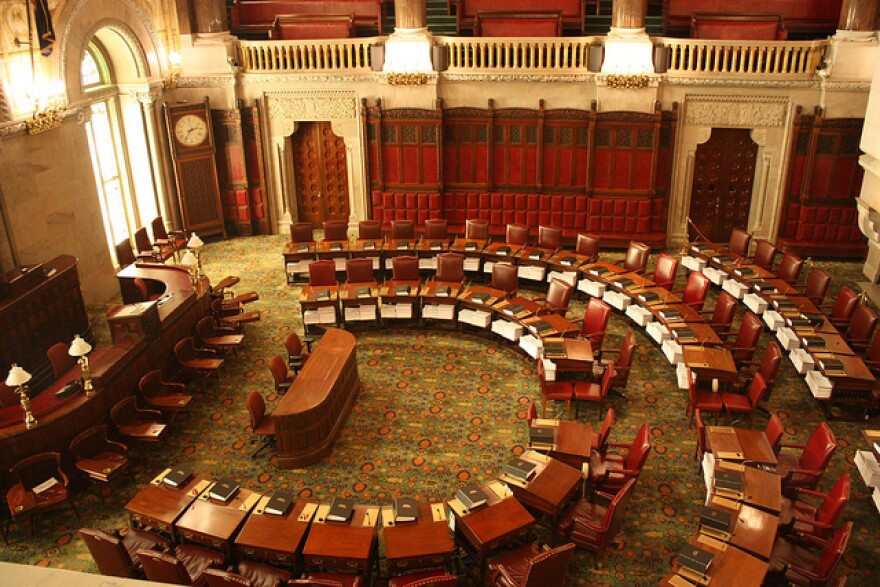The New York state Senate got swept up in this year's Republican election wave, with 33 districts in their corner after the votes were counted.
The dean of central New York’s Senate delegation, state Sen. John DeFrancisco, said that’s good news.
On the flip side, it means difficulty for central New York's Democratic Assembly members to push through key agenda items, and reduces the influence of Sen. Dave Valesky, who DeFrancisco shares representation of Syracuse with.
Early on at Republican election headquarters in Onondaga County Tuesday night, DeFrancisco (R-Syracuse) admitted the vote tallies he was worried about came from places like the Hudson Valley, Schenectady and Rochester, where Republicans were trying to win seats on the 63-member body.
"We’re trying to get the Senate back, and it’s going to be very difficult," he said.
By the end of the night, he was relieved, with Republicans pulling out a three member majority.
"If we didn’t pull it back this year, we’d have no prayer of keeping it two years from now," he said.
They will work with breakaway Democrats to get things done, the influential and rarely challenged senator said, adding that the majority is important from a regional point of view.
"If we’re going to have an upstate presence, and we’re going to try to have some kind of balance in the state, the senate’s the only hope," he said.
This is a blow to progressive Democrats statewide, who’d gotten Democratic Gov. Andrew Cuomo to promise to help the Democrats try to take control of the Senate.
Valesky (D-Oneida) said there is "no question" the coalition of breakaway Democrats he helped form in 2011 will still be around when the legislature reconvenes, despite the outright rule of Republicans.
The Independent Democratic Conference had jointly ruled the Senate with Republicans, but they agreed over the summer to fold back into the rest of the Democratic caucus.
"We had a very significant role in bringing about some internal stability to the Senate," Valesky said. "A house that often known around the nation for being dysfunctional; nobody talks about dysfunction any more in the New York state Senate."
Valesky ran unopposed in the election, but he nearly faced a primary challenge from Jean Kessner, a Syracuse common councilor who wanted Valesky to leave the IDC.
Republican control will make it impossible to get many liberal agenda items through Albany, like the Women’s Equality Act and an increase to the minimum wage.
Al Stirpe, a Democrat who won re-election to the Assembly representing Syracuse's suburbs to the north and east, said it will not be easy to get measures through the legislature now.
"We’re always able to work with the other side," he said. "We make sure that our priorities get addressed. And in those kinds of situations, you have to let some of their priorities get addressed, too. So there’s a lot more compromises that go on."
Assemblyman Sam Roberts, a Democrat that represents part of Syracuse, said it will be two more years of basically the same power structure in Albany.








